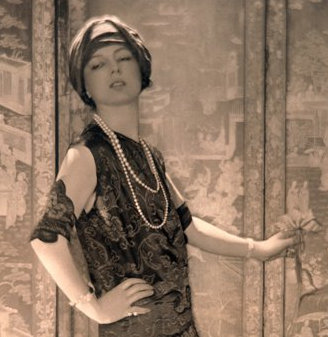People
Jeanne Toussaint of Cartier and the Art of the Wild
Her most indelible creations celebrate the panther.

Her most indelible creations celebrate the panther.

The jungle exoticism of the post-Impressionist painter Henri Rousseau found its luxury equivalent in the jewelry designed by the great Jeanne Toussaint (1887–1978) for La Maison Cartier. Parrots, flamingoes, and strange flowers became Cartier motifs during her reign, but her most indelible creations were those that celebrated the wild’s most mysterious and erotically charged feline—the panther.
Although a panther lurks, ready to strike, in Rousseau’s The Hungry Lion Throws Itself on the Antelope (1905), the Belgian-born Toussaint may have drawn direct inspiration from paintings by her countrymen Fernand Khnopff (La Caresse, 1896) and Walter Sauer (Femme devenue panthère, 1921), or the image of a panther that decorated the reading room of the 1931 Colonial Exposition in Vincennes. Though unable to draw, she possessed the imagination of an artist.
Herself nicknamed “La panthère,” owing to the skins strewn around her Paris apartment, Toussaint was responsible for the evolution of the panther to a three-dimensional outstretched panther on the cabochon emerald brooch she designed for the Duchess of Windsor in 1948. A more upright diamond panther rests on the Kashmir sapphire cabochon clip brooch bought by the Windsors the following year. They added Toussaint’s flexible panther bracelet in 1952. In 1958, the Princess Aga Khan ordered a huge collection of panther-adorned jewelry. The big cat has never lost its currency at Cartier—which has just launched its “La Panthère” fragrance—though it might be mentioned that Toussaint’s panthers are more playful than ferocious.
Her love of exotica continues to inform Cartier’s designs. Cleopatra wouldn’t have scorned the detachable ruby-eyed crocodile gold necklace—featuring 1,023 yellow diamonds and 1,060 emeralds—that the Mexican screen siren María Félix commissioned from Cartier in 1975. More than a hint of its magnificence can be seen in the half-crocodile and half-smooth leather bag—a Cartier masterpiece, if ever there was one—now appearing in The Jeanne Toussaint Collection.
Since Toussaint was a devotee of bags beautiful enough to become museum pieces, she would have appreciated a collection that has been made with the refinement and precision of a Cartier wristwatch. It’s impossible not to imagine one dangling from her wrist as, in turban, pearls, and silks, she went about taming the jungle of jewelry design.

Jeanne Toussaint c. 1920s
Photo: © Baron Adolph de Meyer / Cartier Archive.